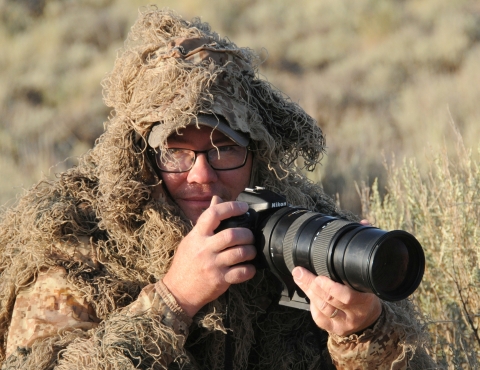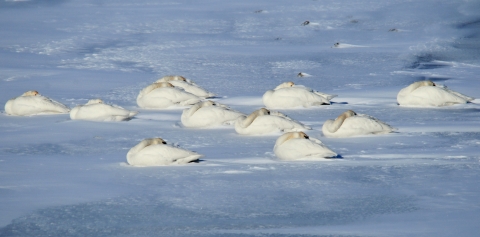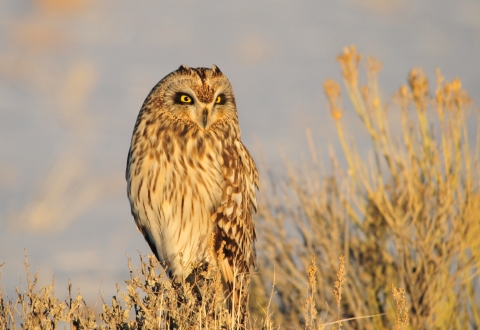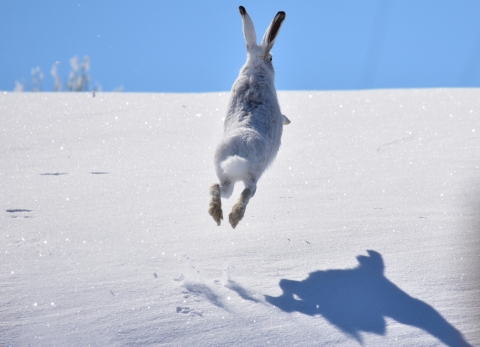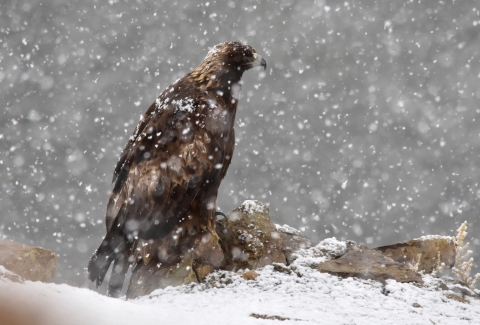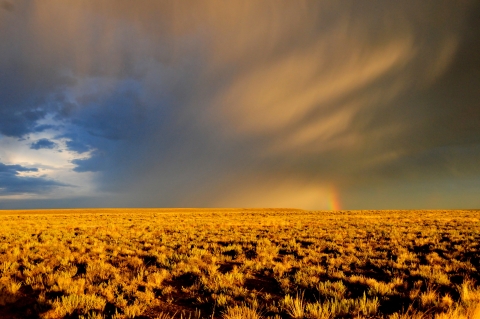One evening at sunset the pronghorns in the photo above were walking past the residence of Tom Koerner, the project leader at Seedskadee National Wildlife Refuge in southwestern Wyoming.
“I grabbed the camera on a whim and tried a number of settings and focus points, trying to capture what I was seeing,” Koerner says. “The result was not a crisp, sharp photo of pronghorns, but more of a painting-like quality that captured the warm glow of the setting sun and life in the sage steppe.”
In addition to managing Seedskadee National Wildlife Refuge and nearby Cokeville Meadows National Wildlife Refuge, Koerner makes a point of getting out on Seedskadee Refuge several times a week with this camera.
His photos document and celebrate the wildlife and high desert sagebrush sagebrush
The western United States’ sagebrush country encompasses over 175 million acres of public and private lands. The sagebrush landscape provides many benefits to our rural economies and communities, and it serves as crucial habitat for a diversity of wildlife, including the iconic greater sage-grouse and over 350 other species.
Learn more about sagebrush plains at the refuge, which is bisected by the Green River.
Koerner has taken thousands of photos at Seedskadee Refuge in recent years.
Here are some of his favorites and why, in his own words, he took them.
“Trumpeter swans’ ability to tough out winter, as long as they have some open water and access to food, has always amazed me. I have watched trumpeters spend days with head and feet tucked into their feathers and ride out blizzards. This group had spent the night on an ice shelf next to a stretch of open water with access to sago pondweed tubers in the Green River. I was able to slowly approach along the auto tour route without alarming them. After a few adjustments for a white bird on snow, I was able to capture just how they spent the night.”
“Short-eared owls are usually not active until the sun is about set and the light is gone. One individual started appearing along the auto tour route with half an hour of light left. On this night, it let me approach slowly in a vehicle while it was perched on a Wyoming big sagebrush. Once the light was gone, the rest of the group appeared and started their hunt for meadow voles. Lesson learned: Persistence pays off. This was the sixth attempt. Previous attempts either had no cooperative owls or the light never appeared.”
“The natural world can bring out a lot of emotions that connect us to it. It can make you laugh or cry, bring joy or amazement. This photo is far from perfect. It is not sharp and crisp, the jackrabbit is not positioned in the frame where I would like it, and the face and eye are not well lighted. I just like it, and it makes me laugh a little. Lesson learned: A photo does not have to be perfect to work. If it brings out an emotion, makes you laugh or makes you think, don’t hit the delete button just yet.”
“I had set up along the Green River in my ghillie suit, planning to take photos of trumpeter swans, common goldeneyes and other waterfowl. I noticed movement just across the river from me and spotted coyote ears. I could tell she had her head cocked to the side and guessed she was listening for meadow voles. I checked my settings and focused on the spot I thought she would leap to and waited. After a few long seconds, she leapt into the air and I was able to snap a few photos at the peak of her arc. Lesson learned: Get out there. Never know what you might see.”
“We have a lot of golden eagles on and around the refuge. I try not to take for granted that I see them often, even though they don’t typically cooperate for a photo. On this day, a snowstorm was brewing. I spotted a golden eagle soaring along a cliff face and set up for a few minutes, thinking it might glide past for a closer photo. As the snowfall intensified, the eagle landed on the edge of the cliff immediately in front of me to wait out the squall. Lesson learned: Right place, right time increases the chance of some luck thrown in.”
“Sage steppe country can look a little harsh in the light of midday. It does not appear to have much wildlife at first glance, but spend some time and you will be amazed at the variety of life that can make a living in this cold desert environment. Sunrise and sunset often add color to this landscape, so I am often out early and late to catch the light. This photo captures a wide-open landscape in the sage steppe and gives a sense of the scale of this country. Lesson I already knew but relearned: Get up early and stay late. Wildlife is most active and the light is best.”
More photoGRAPHY tips Visit a national wildlife refuge


